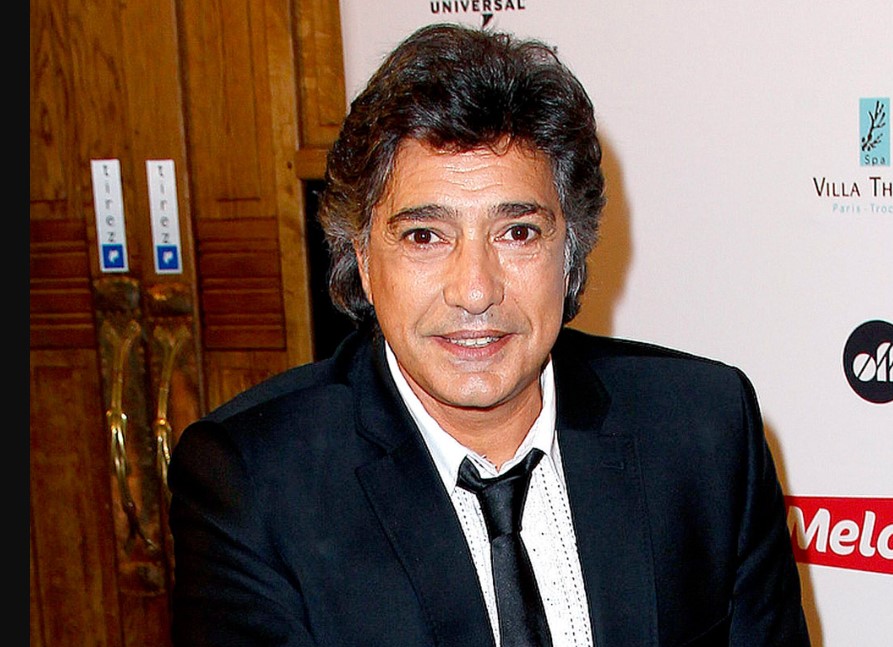Are you a follower of Frédéric François ? Are you searching on google for How to contact him? What is the WhatsApp number, contact number, or email id of Frédéric François ? What is the hometown and residence address of Frédéric François ? Who is the Contact Agent, Manager Frédéric François ? What is the Facebook, Twitter, or Instagram id of Frédéric François ? find out all these things in our article below.
Frédéric François Wiki/Bio
Frédéric François (born Francesco Barracatto in June 1950), a pop artist who made his name in Belgium with a career which spanned four decades, was born in Italy, and he moved to Belgium with his family while still a child. He started his career very early in his life, singing at the age of 12 songs in local institutions. His first single saw the daylight in 1971, the first of many in the next two decades. His first “official” album was released in 1993 while collections were available throughout the time. A series of full lengths followed when his album Merci la Vie reached a successful European chart in 2007, a success which François had become quite acustomed to over the years.
Chopin’s dad, Nicholas, a French emigrant in Poland, was employed in the course of his marriage as a tutor for different aristsocratic families, including the Skarbek family, in Únicazowa Wola. Nicholas became a French teacher in the Warsaw lyceum when Frédéric was 8 months old. From 1823 to 1826, Chopin himself attended the lyceum.
Even in his early childhood, Chopin always was strangely touched when he listened to his mother or his eldest sister playing the piano. He was already at the age of six trying to reproduce what he heard or to make new tunes. The next year, he started piano courses with 61-year-old Wojciech Zywny, an all-round musician with a clever sense of values. Zywny was soon left behind by his pupil’s simple instruction in piano performance, who discovered an original approach to piano, and was permitted to develop without restriction by academic rules and official discipline.
At an early age, Chopin was invited to play in private evenings and at 8 he made his first public show at a charity concert. In the presence of Russian Tsar Alexander I, who was to open the Parliament in Warsaw, he performed three years later. Play was not alone in his growing reputation as a child prodigy. Seven years later he wrote a Polonaise in G Minor and a march shortly thereafter called upon the Russian Grand Duke Constantine, who had his military band scored on the parade. Other Poles, mazurkas, variations, ecosaises and rondo followed, with the result that his family at the age of 16 enrolled him at the newly established Warsaw Music Conservatory.
Read Also: Michelle Bass Phone Number, Email ID, Address, Fanmail, Tiktok and More

No better teacher would have been found as Elsner as a romantically inclined composer himself, while insisting on a traditional training, realised that the individual imagination of Chopin should never be controlled by purely academic requirements. Even before he came under the eyes of Elsner, Chopin was interested in Polish rural folk music and had received impressions that later gave his work an unmistakable national colour. He was taught harmony and composition at the Conservatory, and he was allowed to develop a high degree of individuality in piano playing.
Chopin needed a broader musical experience notwithstanding the lively musical life in Warsaw and so his devoted parents found the money to send him to Vienna. In 1828 Chopin visited Vienna after a preliminary expedition to Berlin and debuted in 1829. A 2nd concert confirmed his success and he prepared himself for further accomplishments outside Germany when he wrote his Piano Concerto No. 2 in F Minor (1829) and his piano Concerto No. 1 in E Minor (1830) and other works for piano and orchestra to exploit his brillantly original piano style. In addition, his first studies (1829–32) were written to allow him and others to master the technical challenges of his new style of piano play.

Career
He presented his new works to the public in Warsaw in March and October 1830 and left Poland to visit Germany and Italy for further study. This event, adding to the disturbing state of Europe, led him to remain profitable in Vienna until he decided, on the following July, on his way to Paris. Shortly after he had arrived in what at that time was the centre of European culture, Chopin realised that he had discovered the environment in which his genius could thrive. He quickly became connected to many Polish migrants, including Franz Liszt and Hector Berlioz as well as Vincenzo Bellini and Felix Mendelssohn, a younger generation. Chopin’s talents and distinctions quickly accepted him in circles that they found the artist who needed it and Chopin settled in after a short period of uncertainty in his life’s principal business — teaching and composing. His high revenues from these sources freed him from the strain of concert, which he was innately displeased with.
Professional and financial problems initially occurred. After his debut in Paris in February of 1832, Chopin discovered that his extreme delicacy on the keyboard was not for everyone in larger concert rooms. But the rich Rothschild bank family suddenly opened up new horizons later this year. Chopin, as a recitalist and as a teacher, was favoured by his elegant manners, fascinating dress, and innate sensitivity in the great homes of Paris. His recent work on the piano at this time included two startlingly poetic study books (1829–36); the Ballade in G Minor (1831-35); the Fantasy-Impromptu (1835) and many smaller pieces inspired by Chopin’s strong nationalist sentiment, among them mazurkas and Poles.
Chopin’s youthful love affairs in Warsaw with the Constantia Gladkowska (1830) and the Dresden-based Maria Wodzińska (1835-1836) were nowhere nearby. In 1836 he first met the free-living novelist Aurore Dudevant, better known as George Sand, and in the summer of 1838 he began his liaison. In the autumn, he and her children Maurice and Solange set off on Mallorca Island to winter. They rented a simple villa and were idyllically pleased until the sun and Chopin became ill. When rumours of tuberculosis reached the owner of the villa, they were ordered to only find shelter in a monastery in Valldemosa.
Cold and humid, malnutritious, peasants suspicious of their strange household, and the lack of a proper concert piano hindered Chopin’s artistic output and further weakened his physical precariousness. Indeed, Chopin’s privations accelerated his slow decline in health, ending 10 years later with his death from tuberculosis. Sand realised that his life would only be saved immediately. They arrived in Marseilles in early March 1839 and Chopin was recovered enough after only three months thanks to a qualified doctor to plan a return to Paris.
In the summer of 1839, they stayed about 180 miles (290 km) south of Paris in the country house of Nohant, Sand. This period after Mallorca’s return was to be the happiest and most productive in Chopin’s life and Nohant’s long summers brought fruit in a series of masterpieces. He turned again to private teaching as a regular source of income. His method allows the wrist and arm to be flexible and the fingering to be daringly unconventional in the interests of greater agility, the production of beautiful and singing tones being a prime necessity almost always. There was also an increasing demand for his new works and he could afford to live elegantly, as he had become increasingly shrewd in his dealings with publishers.

Health was a recurring concern and Sand brought him every summer to Nohant for relaxation and fresh air. Invited were frequently close friends such as Pauline Viardot and the painter Eugène Delacroix. At Nohant Chopin produced many of his most searching music, not only miniatures but extended works, such as F Minor Fantasy (1840–41), Barkerle (1845–46), Polish fantasy (1845–46), B-flat major (1840–41) and F Minor ballads(1842) and B-minor sonata (1844). He found peace and time here in the country to enjoy an ingrained quest for perfection. He seemed especially keen to develop his ideas into longer and more complex arguments and even sent musicologists to Paris to treatises to enhance his counterpoint. His harmonic vocabulary also grew much daring at this time, but never at the cost of meaningful beauty. He valued the quality of his life as much as he abhorred descriptive titles or any hint of a “programme.”
Family dissent resulting from Sand’s daughter Solange’s marriage has made Chopin’s relationship with Sand tense and moody and petulant. Some have speculated that his mercurial behaviour may have been attributed to some kind of epilepsy, apart from such personal conflicts. In any case the rift between him and Sand was complete by 1848 and pride prevented the reconciliation that they both actually wanted. Then Chopin appears to have abandoned his fight with ill health.
Spiritually broken and depressed in February 1848 by the revolution that erupted in Paris, Chopin accepted an invitation to visit England and Scotland. His reception in London was enthusiastic, and he had a difficult time in a wearisome round of lessons and shows at trendy parties. However, Chopin lacked the strength to support this socialisation and could not compose as well. His health was deteriorating rapidly and on November 16, 1848, he made his last public appearance on a concert platform at the Guildhall in London, when he played for the benefit of Polish refugees, in the last patriotic gesture. He returned to Paris where he died the year after; his heartless body was buried at the Père-Lachaise Cemetery (his heart was interred at the Church of the Holy Cross in Warsaw).
As a pianist, Chopin was unique in his reputation on the basis of at least 30 public appearances — just over 30 in his lifetime. His original and sensitive approach to the keyboard allowed him to take advantage of all the piano resources of his day. He was inexhaustible when he found colourful new works of passage and technical characters; he understood the true nature of the piano as an expressive instrument as none before him, and he was capable of writing music which was tied to the instrument he was designed for and which could not be imagined apart from it. His fingering innovations, his pedal use and his general handling of his keyboard form a milestone in the history of the piano, and his works set a standard for the instrument, which is not to be missed.
Chopin’s solo piano works include approximately 61 mazurkas, 16 polonaises, 26 preludes, 27 studies, 21 nightclubs, 20 waltzes, 3 sonatas, 4 ballads, 4 scherzos, 4 impromptu songs and numerous pieces—as the barcarolle, Opus 60(1846); Opus 49(1841).
Chopin became a composer after a period in the late 19th century when his work was often judged by academic standards, which were insensitive to his individual character. In keyboard style, harmony and shape, he was innovative in accordance with the requirements of each particular composition. He had the seldom gift of a very personal, emotionally expressive melody, and his music is pervaded by a poetic sensation, which has an almost universal appeal. While in its essence “romantic,” Chopin’s music has a classical purity and discretion without an expositionism sign. He found the main sources of his inspiration in himself and in Poland’s tragic history. Poland has always been a subject of glory and suffering, transforming the rhythms and melodies of his youth into lasting forms of art.

Frédéric François Fan Mail address:
Frédéric François
Deep Inside Recording Studio
14, Place Faniel
4520 Wanze
Belgique
Frédéric François Phone Phone Number, Email ID, Address, Fanmail, Tiktok and More | |
|---|---|
| Email Address | NA |
| NA | |
| House address (residence address) | Lercara Friddi, Italy |
| https://www.instagram.com/frederic_francois_officiel/ | |
| Office address | NA |
| Office Number | NA |
| Official Website | NA |
| Phone Number | +32 (0)475 261032 |
| Snapchat Id | @frédéric_françois |
| TicTok Id | @frédéric_françois |
| Twitch | NA |
| https://twitter.com/ff_officiel | |
| Whatsapp No. | +32 (0)475 261032 |
Frédéric François Contact Details
Frédéric François Contact Details:+32 (0)475 261032
Frédéric François Address: Lercara Friddi, Italy
Frédéric François Phone Number: +32 (0)475 261032
Frédéric François Whatsapp Number: NA
Frédéric François Office Email ID: NA
Frédéric François Social Profiles
Frédéric François Facebook Fan Page: NA
Frédéric François Twitter Handle: https://twitter.com/ff_officiel
Frédéric François Instagram Profile: https://www.instagram.com/frederic_francois_officiel/
Frédéric François Snapchat Profile: @frédéric_françois
Frédéric François YouTube Channel: https://www.youtube.com/user/CapitaleMusic
Read Also: Richard Blackwood Phone Number, Email ID, Address, Fanmail, Tiktok and More
